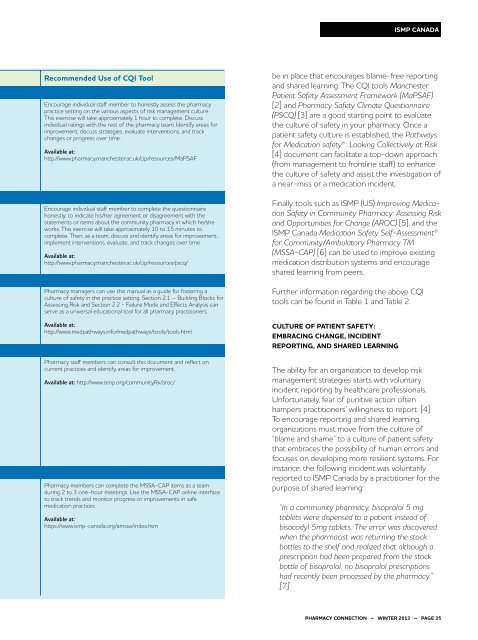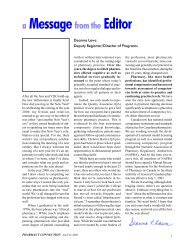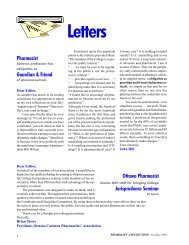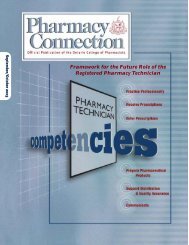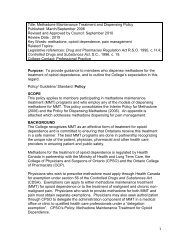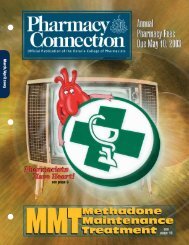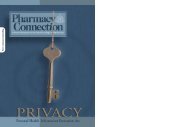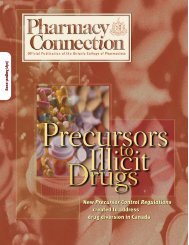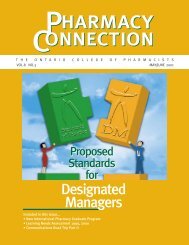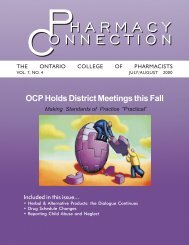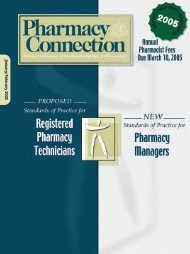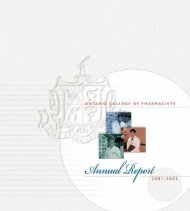Download - Ontario College of Pharmacists
Download - Ontario College of Pharmacists
Download - Ontario College of Pharmacists
You also want an ePaper? Increase the reach of your titles
YUMPU automatically turns print PDFs into web optimized ePapers that Google loves.
ISMP CANADA<br />
be in place that encourages blame-free reporting<br />
and shared learning. The CQI tools Manchester<br />
Patient Safety Assessment Framework (MaPSAF)<br />
[2] and Pharmacy Safety Climate Questionnaire<br />
(PSCQ) [3] are a good starting point to evaluate<br />
the culture <strong>of</strong> safety in your pharmacy. Once a<br />
patient safety culture is established, the Pathways<br />
for Medication safety®: Looking Collectively at Risk<br />
[4] document can facilitate a top-down approach<br />
(from management to frontline staff) to enhance<br />
the culture <strong>of</strong> safety and assist the investigation <strong>of</strong><br />
a near-miss or a medication incident.<br />
Finally, tools such as ISMP (US) Improving Medication<br />
Safety in Community Pharmacy: Assessing Risk<br />
and Opportunities for Change (AROC) [5], and the<br />
ISMP Canada Medication Safety Self-Assessment®<br />
for Community/Ambulatory Pharmacy TM<br />
(MSSA-CAP) [6] can be used to improve existing<br />
medication distribution systems and encourage<br />
shared learning from peers.<br />
Further information regarding the above CQI<br />
tools can be found in Table 1 and Table 2.<br />
Culture <strong>of</strong> Patient Safety:<br />
Embracing Change, Incident<br />
Reporting, and Shared learning<br />
The ability for an organization to develop risk<br />
management strategies starts with voluntary<br />
incident reporting by healthcare pr<strong>of</strong>essionals.<br />
Unfortunately, fear <strong>of</strong> punitive action <strong>of</strong>ten<br />
hampers practitioners’ willingness to report. [4]<br />
To encourage reporting and shared learning,<br />
organizations must move from the culture <strong>of</strong><br />
“blame and shame” to a culture <strong>of</strong> patient safety<br />
that embraces the possibility <strong>of</strong> human errors and<br />
focuses on developing more resilient systems. For<br />
instance, the following incident was voluntarily<br />
reported to ISMP Canada by a practitioner for the<br />
purpose <strong>of</strong> shared learning:<br />
“In a community pharmacy, bisoprolol 5 mg<br />
tablets were dispensed to a patient instead <strong>of</strong><br />
bisacodyl 5mg tablets. The error was discovered<br />
when the pharmacist was returning the stock<br />
bottles to the shelf and realized that although a<br />
prescription had been prepared from the stock<br />
bottle <strong>of</strong> bisoprolol, no bisoprolol prescriptions<br />
had recently been processed by the pharmacy.”<br />
[7]<br />
PHARMACY CONNECTION ~ WINTER 2013 ~ PAGE 35


